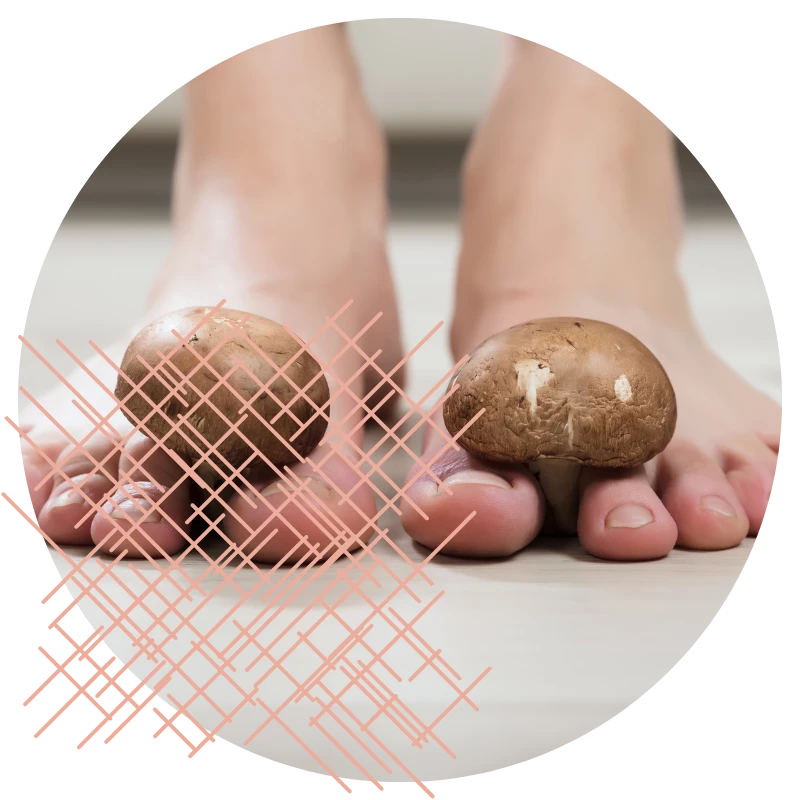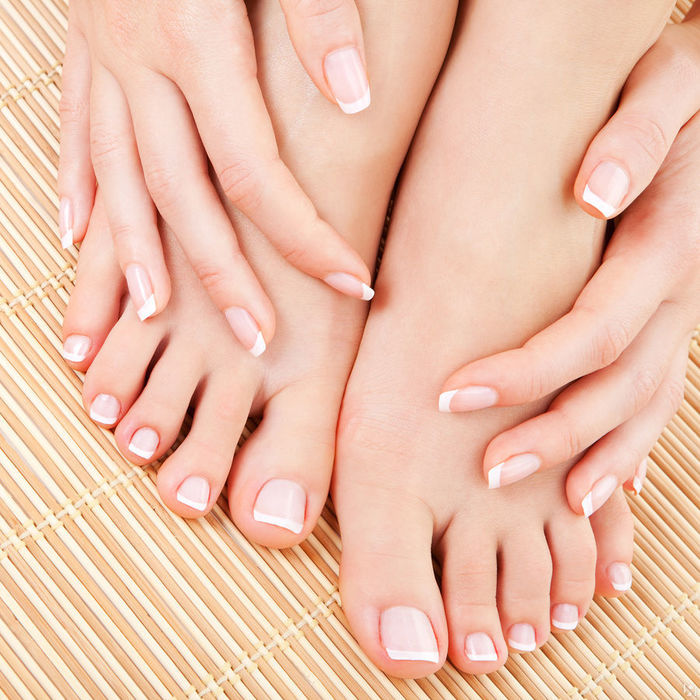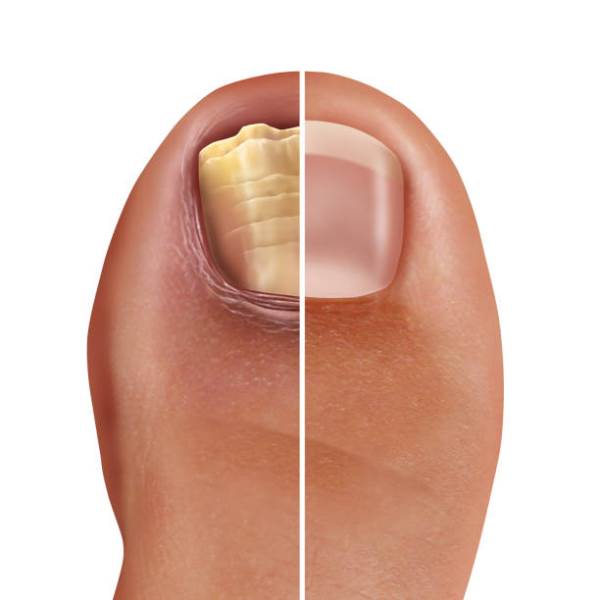
Advantages of
Onychomycosis treatment with laser
Minimal or no pain
Safety for the body thanks to local treatment
Complete recovery in 85% of patients
Minimal time for treatment
Onychomycosis, or fungal nail disease, is quite a common disease, with up to 20% of people suffering from it. It is highly contagious, and you can catch it anywhere, like in a swimming pool or bathhouse. Moisture and heat are the perfect breeding ground for onychomycosis. When it gets on your skin and nails, it easily takes root and actively begins to destroy healthy tissue.
If someone in the family suffers from nail fungus, then every relative who uses the same towels, shoes or hygiene products with him can also be at risk of infection. Fungal spores can persist for quite a long time on various surfaces, such as wooden benches, walkways and carpets, where previously fungal skin scales have fallen.
How Onychomycosis Laser Treatment Works
This procedure does not require local anesthesia. A powerful laser beam heats the subnail plate and the nail. This heat causes the destruction of pathogenic spores.
Before the treatment
In order for the treatment to be successful, a correct diagnosis is very important. Your doctor will consult and suggest the right course of treatment and find out if you have any contraindications to laser nail fungus treatment.
After the procedure
It may take about 12 months for the nail plate to fully recover. It is very important not to forget about the prevention of reinfection, especially in swimming pools, baths and saunas.

Do you want to get more information?
Contraindications for
laser treatment of onychomycosis
Oncological diseases
Epilepsy;
Diseases of the blood clotting system
Autoimmune pathologies
High temperature in case of inflammation
Predisposition to keloid scars

How Onychomycosis Laser Treatment Works
After the completion of laser treatment of fungal lesions, regenerative processes in tissues are activated, a pronounced antibacterial effect is observed, and the inflammatory process subsides in the periungual fold.
Even after the first session, improvements are observed, and during the growth of the nail plate, you will notice that a healthy nail grows back.
Laser treatment of onychomycosis allows you to destroy the vegetative body of the fungus, preventing its reproduction without damaging the nail plate itself and the surrounding tissues.
If the nail fungus is very severe, medication may also be required. In that case, your doctor will prescribe it.
How many treatments are needed, and with what frequency?
Removal of fungus by laser is the easiest and most gentle method and will cost much less than long and expensive medication.
10 to 20 minutes
One procedure takes 10 to 20 minutes, depending on the severity of the lesion.
2 to 10 sessions
Your healthcare professional will determine how many sessions are needed for the best effect.
Signs of fungal nail disease
In most cases, the disease begins when pathogenic fungus spores get on the skin of the hands or feet. Since the disease is very active and spreads quickly, it is important to identify and treat it as early as possible. The following signs indicate the presence of fungus on the nails and are an indication for laser treatment of onychomycosis:
- The shade of the nail plate has become yellow, green, grey or brown;
- The nail has lost its healthy shine;
- The nail is more brittle or thinning;
- Keratinised tissues have accumulated under the nail plate;
- The nail bed is troubled by swelling, itching, and redness.

Specialists

Vinogradova
Marina
Doctor, cosmetologist

Karamalak
Irina
Doctor, cosmetologist

Moghildea
Victoria
Doctor, cosmetologist

Lebedeva
Maria
Doctor, cosmetologist

